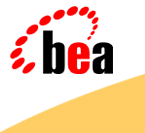If you have any questions about this version of BEA eLink Data Integration Option, or if you have problems installing and running BEA eLink Data Integration Option, contact BEA Customer Support through BEA WebSupport at www.beasys.com. You can also contact Customer Support by using the contact information provided on the Customer Support Card, which is included in the product package.

